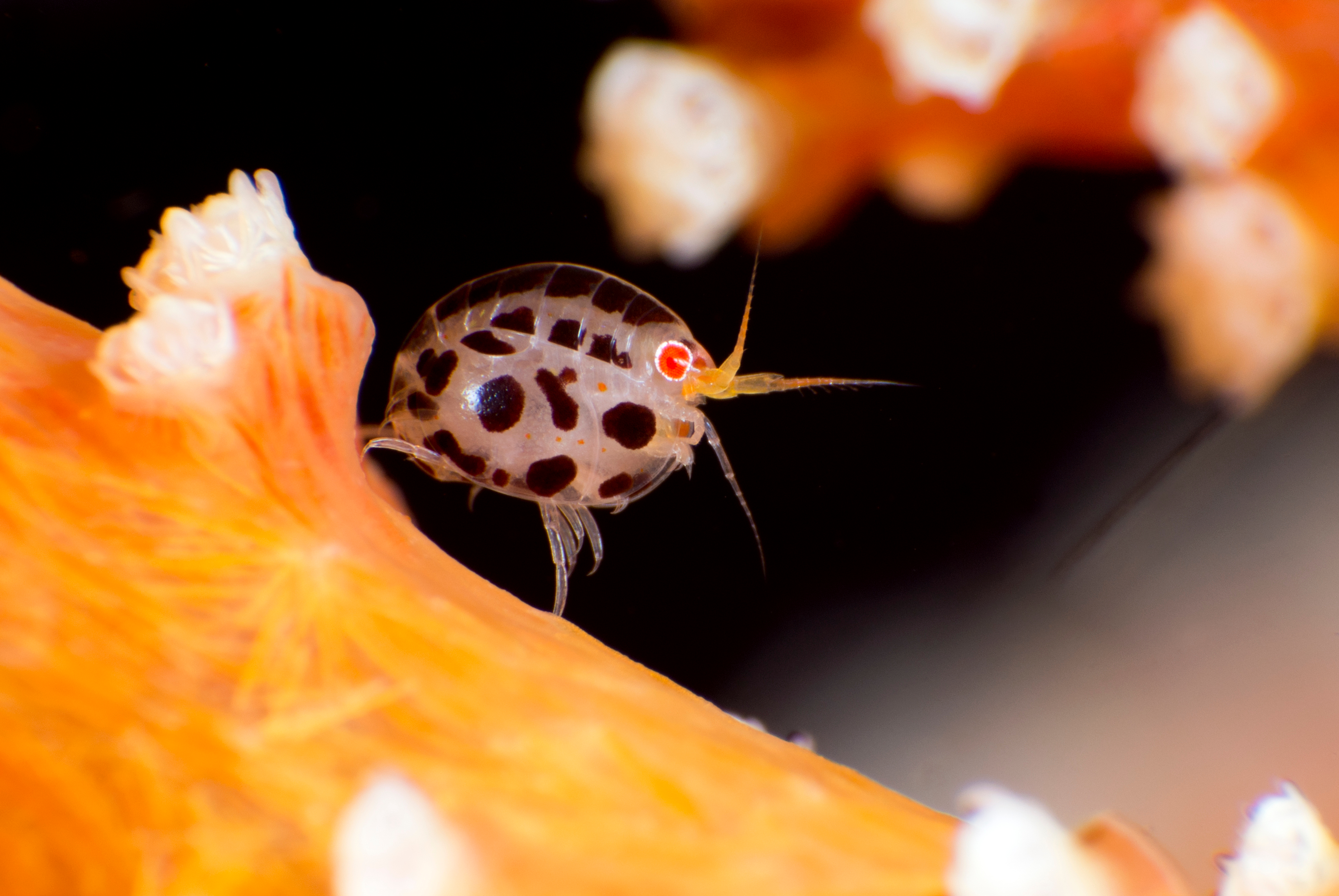Amphipod << AM fih pod >> is a type of crustacean that resembles shrimp. There are thousands of species (kinds) of amphipods. Most species live in salt water and can be found in all ocean habitats, even the deepest ocean trenches. There are also many freshwater species. Most amphipods live in water, while some species live on land. Common beach-dwelling amphipods are called sandhoppers or beach fleas. By the ocean, beach fleas can often be found by turning over clumps of seaweed on the beach. They then hop away to bury themselves into the sand.
Amphipods range in size from the smallest at 1/25 inch (1 millimeter) long to the giant amphipod, which can grow up to 13 inches (340 millimeters) long. However, most amphipods are around 2/5 to 4/5 inch (1 to 2 centimeters) in length. The nameamphipod is Latin fordifferent feet. This name refers to the different forms of legs this animal may have. A similar animal called the isopod (meaning same feet) is closely related.
Freshwater amphipods are also known as freshwater shrimp. But they are not really shrimp. They are also known as scuds or sideswimmers.
Some ocean amphipods, known as skeleton shrimp, have long, cylindrical bodies and fewer legs than other species. They can be found clinging to such small living things as algae and bryozoans. Some are parasites of whales and are known as whale lice or cyamids. These amphipods have a flattened body and sharp, hooked claws used to cling to the skin of the whale. One group of amphipods is pelagic, inhabiting the water of open oceans far from shore. Some of these open-ocean amphipods are completely transparent. Others are capable of bioluminescence (the ability to give off light), and many have very large eyes to see in the dark ocean depths.
Amphipods feed on almost anything, and they are often scavengers. They are an important component of ocean and freshwater ecosystems. Many kinds of other water-dwelling animals eat amphipods.


